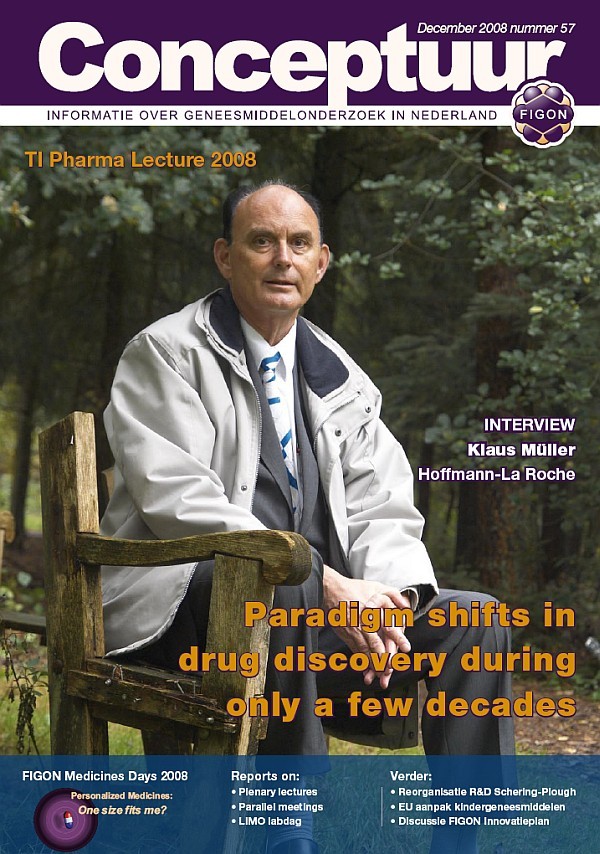Paying for personalized drugs
Bastienne Wentzel
1 december 2008, Conceptuur
The future of personalized medicine ultimately depends on two factors, says Martijn Groot of Novartis. One is the ability of pharmaceutical companies to manage the costs of development and the other is the increasing cost of healthcare. "How much are we willing to pay?"

Martijn Groot defines personalized medicine rather narrowly as "covering the situations wherein therapies are matched with specific patient population characteristics using clinical biomarkers." "This way of treatment can create added value in at least four ways," says Groot. Firstly, patients and physicians face less uncertainty because the outcome of a personalized treatment is much better defined than a generic one. Secondly, non-responders to the treatment are by definition removed from the potential group of users. This diminishes the risk for adverse events and the cost associated with these. Additionally, more positive results may lead to a larger group of patients who are good responders, some of whom may not have used the drug otherwise. Finally, these patients may comply better with the therapy, thus improving long term results in treatment of chronic diseases.
Challenge
However, the pharmaceutical market faces an economic challenge, says Groot. "There are three aspects which exert pressure on the success of personalized medicine." First, the affordability of healthcare is under pressure. "Society is ageing, Groot explains. "People tend to live longer. They enter the labor market later because they study longer, and they retire earlier. Thus, there is less income of taxes and increased cost of healthcare."
Another economic challenge is the decreasing number of approved active substances in spite of increased spending on development of drugs. "This has a consequence on the cost of development per drug," says Groot. "The average cost of introducing a new medicine on the market is now about $1,4 billion. Biotechnology has not given an advantage. Up until now the cost of developing biotech drugs is about the same as developing a traditional drug."
Additionally, the number of eligible patients are also of influence on the cost of treatment. Groot illustrates: "One year of treatment with Lipitor cost 871 dollars while 14,8 million patients are treated annually. Gleevec on the other hand costs 40,000 dollars per year with an estimated 55,000 patients. Treatment cost rises exponentially as soon as patient numbers become very small. This is a consequence which may arise from personalized medicine resulting in smaller patient groups."
Finally, personalized medicine is not the solution for all diseases, warns Groot. The medicine must possess a sustainable benefit over currently available treatments, and there must be an accepted biomarker for the disease. "This is not obvious because many diseases are multi-factorial which makes it very difficult to discover a relevant target in many, many indications."
Solution
"Because of these factors, the cost of healthcare has increased substantially over the last years. This will not go on forever," states Groot. "One solution is an assessment of how much a society is willing to pay for a new treatment. This is a relatively new field for policy makers." In the Netherlands, CVZ holds these health technology assessments. There is no official threshold of society's willingness to pay in the Netherlands. However, an added cost of up to €80,000/QALY has been suggested to be acceptable under certain circumstances by the council of public health and health care (an independent advisory body to the Ministry of Health). "Many recent new drugs will not meet this threshold," shows Groot. "An example is trastuzumab which cost €100.000 per QALY. This drug was initially not adopted in the UK, only after an outcry of the public it was made available. This shows that not only cost and effect determines society's willingness to pay. Despite these challenges I think it is possible to create personalized medicine with added value at costs acceptable to society."
Dit artikel is gepubliceerd in de Engelstalige FIGON Medicines Days special van Conceptuur nr. 57, december 2008.
